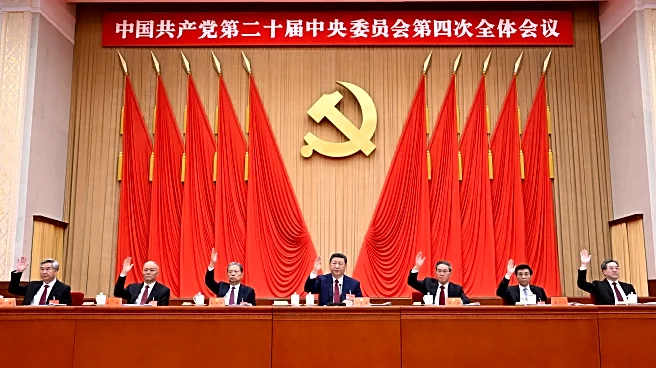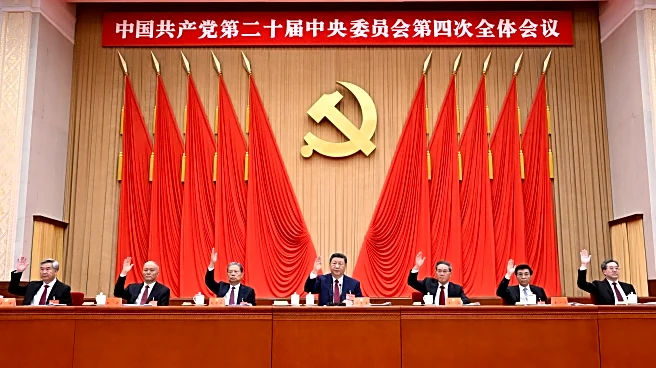What's Happening?
China's ruling Communist Party has unveiled a new five-year plan aimed at achieving technological self-reliance, particularly in response to U.S. restrictions on semiconductors and other high-tech items.
The plan, which is yet to be officially adopted, was announced ahead of a summit between President Trump and President Xi Jinping. It focuses on reducing China's dependence on international products, especially in fields like semiconductors and artificial intelligence. The plan also aims to boost domestic consumption and reduce reliance on exports, a strategy influenced by the fluctuating tariff regime set by the Trump administration.
Why It's Important?
The plan signifies China's strategic move to insulate its tech and science industries from foreign pressures, particularly from the U.S. This could lead to significant shifts in global tech supply chains and impact U.S. companies like Nvidia and OpenAI, which currently supply key components to China. By focusing on self-reliance, China aims to mitigate the effects of U.S. trade policies and strengthen its economic position. This development could lead to increased competition in the tech sector and potentially alter the dynamics of international trade and economic relations.
What's Next?
As China moves forward with its plan, it is likely to invest heavily in domestic tech development, potentially leading to innovations that could challenge U.S. tech dominance. The upcoming summit between President Trump and President Xi Jinping may address these tensions, but the long-term implications could include a more fragmented global tech landscape. Stakeholders in the U.S. tech industry may need to reassess their strategies in light of China's push for self-reliance.













